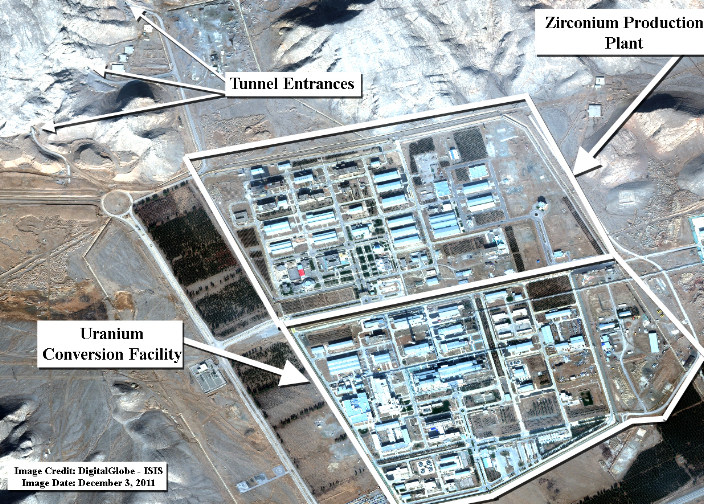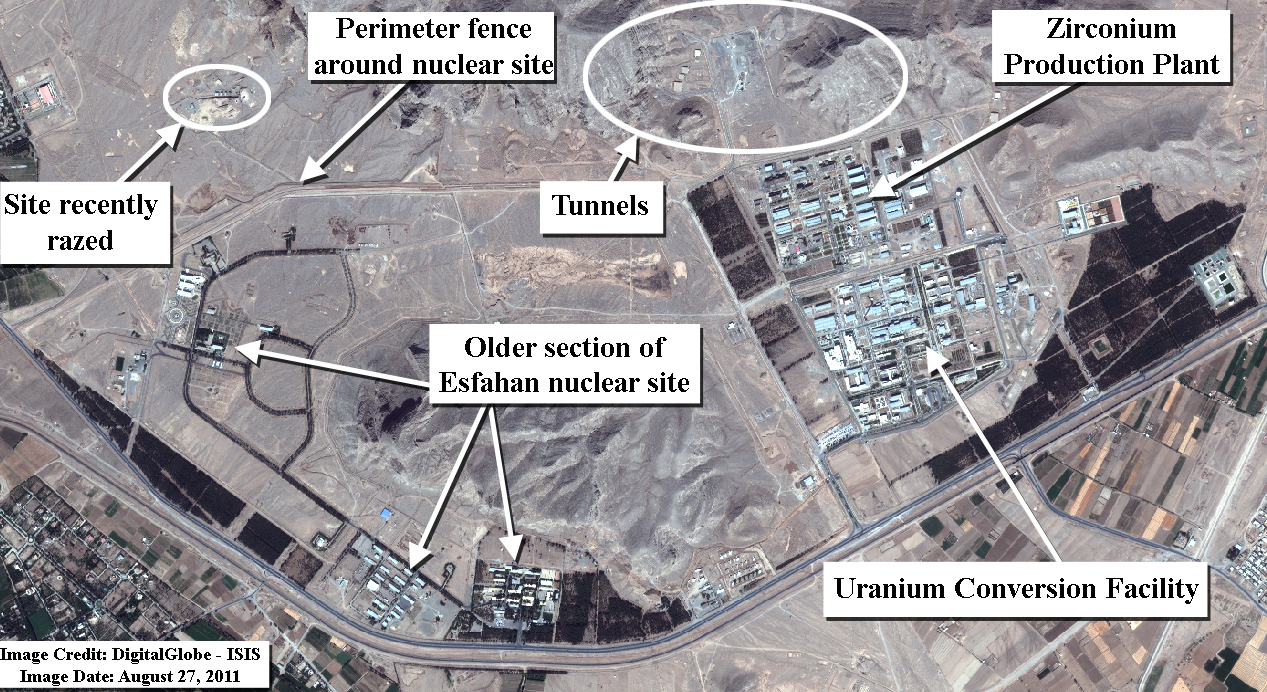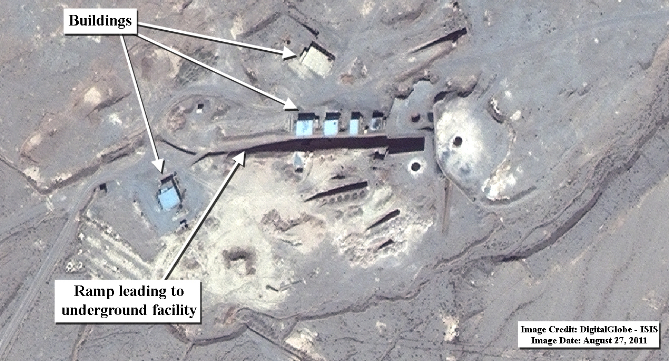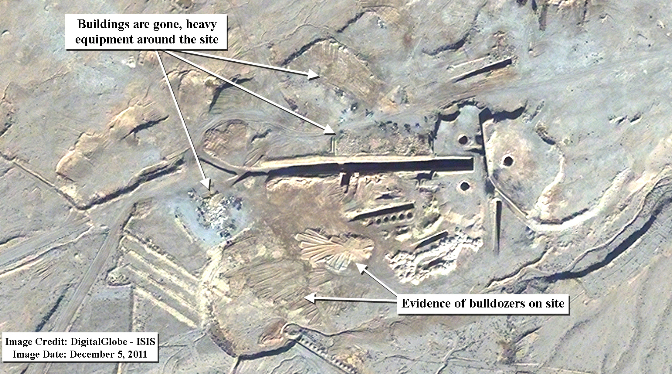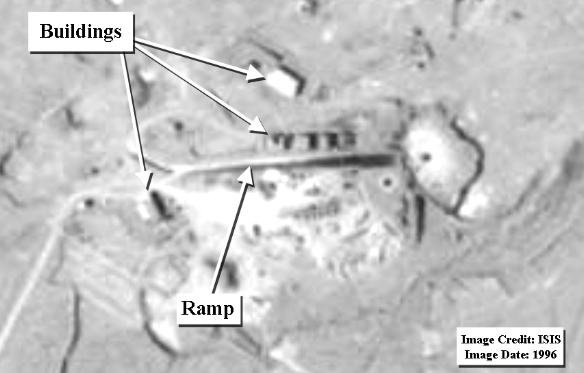For your perusal and postulation:
“No Visible Evidence of Explosion at Esfahan Nuclear Site; Adjacent Facility Razed”
The first clear pictures of Iran’s nuclear site near Isfahan have been published and analyzed following an explosion at or near the site on Nov. 28, and they provide another piece of the puzzle. But what happened there remains a mystery.
Iran’s uranium conversion facility sits outside Isfahan. It is there that yellowcake is turned into uranium hexafluoride gas (UF6), which is then fed into centrifuges and turned into enriched uranium. The enriched uranium then can be made into fuel for power stations, or it can be highly enriched for a nuclear bomb.
Fox News obtained satellite pictures of the Isfahan nuclear site between Dec. 3 and 5, less than a week after reports of explosions in the area were heard. Analysts at the Institute for Science and International Security (ISIS), which employs some of the most widely respected experts on Iran’s nuclear sites, scrutinized the images and said there is no evidence of an explosion — but there wouldn’t be clear evidence several days after an event.
Click here to view the ISIS report. (DETAILED PHOTOS and report from them are below)
Iranian officials have issued conflicting comments about the blast, which, if it occurred at the uranium conversion facility, could be very damaging to the nation’s nuclear program.
A report of the explosion was first mentioned in the semi-official Fars News website. Then the report was removed. Then it was finally described as an explosion deriving from a military exercise by Isfahan’s governor, Alireza Zaker-Isfahani.
Israeli sources have suggested that the blast occurred at the nuclear facility; Iran, in turn, has denied that any sort of blast happened there.
But others find Iran’s denials suspicious, given that there have been numerous acts of sabotage against its nuclear and military sites and scientists in the last few years. Just last month, an explosion occurred at a sensitive missile site, killing 20 people, including the father of Iran’s Shahab 3 missile. It is not clear what caused that blast, or whether it was accidental, but many believe it was no coincidence.
ISIS analysts who looked at the images from Isfahan said there had been a dramatic change in the landscape around a tunnel leading down to a storage facility on the periphery of the uranium conversion site. Several structures above that storage facility, which had been there for 15 years and stood intact as recently as August, are gone. There now is evidence of bulldozing around the old structures.
It is not clear what is stored in that facility, which used to be a salt mine, or whether the underground storage was damaged. But Iran has been known to store UF6 underground, ISIS says, so it is possible that converted yellowcake was in that facility. According to ISIS, there is no evidence of an explosion, but there wouldn’t be clear evidence several days after an event.
“After five to seven days, that’s what you would be looking at anyway — clean-up,” ISIS senior analyst Paul Brannan told Fox News.
“The pictures we have seen were dramatic insofar as the buildings were there for at least 15 years,” he said. “On Dec. 5, they were gone. Whether or not that is circumstantial is not clear, but it warrants further scrutiny.”
Brannan says much of Iran’s yellowcake has been converted to UF6, but the Iranians still have some stock. Beyond that, however, the nation’s ability to mine and mill yellowcake is limited.
“There is something strange going on,” he said. “It is not clear what it is. There was the recent blast at the missile facility with people killed. There was a report of a blast at Isfahan’s uranium conversion site. A U.S. drone has been downed.
“Something is going on. It’s not clear what it is.”
An explosion reportedly occurred on Monday, November 28, 2011 somewhere in or near the city of Esfahan in Iran. The Times reported that the blast occurred at the Esfahan nuclear site and that it has seen satellite imagery that showed “billowing smoke and destruction.” The Times also cites “Israeli intelligence officials” as claiming that the blast was “no accident.” ISIS has acquired DigitalGlobe satellite imagery of the Esfahan nuclear site taken on December 3, 2011 and December 5, 2011. There does not appear to be any visible evidence of an explosion, such as building damage or debris, on the grounds of the known nuclear facilities or at the tunnel facility directly north of the Uranium Conversion Facility and Zirconium Production Plant at the Esfahan site (see figure 1).
It is still unclear where the reported blast occurred in Esfahan and whether it occurred anywhere near the nuclear facility. ISIS has identified a facility near the Esfahan nuclear site that underwent a significant transformation recently. The facility is approximately 400 meters away from the edge of a perimeter fence that surrounds the Esfahan nuclear site (see figure 2). An August 27, 2011 satellite image shows that the facility consisted of a ramp leading underground with several buildings along the surface (see figure 3). In a December 5, 2011 satellite image, the buildings are gone, heavy equipment can be seen around the site and there is evidence of bulldozing activity (see figure 4). These buildings were present on the site for at least 15 years (see figure 5). It is unclear how and why the buildings are no longer present at the site. It is also unclear whether this transformation is related to the November 28th, 2011 blast reported to have been heard throughout Esfahan.
ISIS has learned that this underground facility was originally a salt mine dating back to at least the 1980s, and that it has more recently been used for storage. It is unclear what Iran stored in this underground facility. The Times article quoted a “military intelligence source” saying the blast “caused damage to the facilities in Isfahan, particularly to the elements we believe were involved in storage of raw materials.”
Figure 1. December 3, 2011 DigitalGlobe satellite image of the Uranium Conversion Facility, Zirconium Production Plant and entrances to a tunnel facility at the Esfahan nuclear site. There does not appear to be any visible evidence of an explosion at these facilities.
Figure 2. Wide-view of the entire Esfahan nuclear site. The facility that underwent significant transformation recently is approximately 400 meters from a perimeter fence that surrounds the Esfahan nuclear site. It is unclear if this facility is related to the Esfahan nuclear site.
Figure 3. August 27, 2011 satellite image showing the facility before a November 28, 2011 explosion reportedly heard throughout Esfahan.
Figure 4. December 5, 2011 satellite image showing the facility after a November 28, 2011 explosion was reportedly heard throughout Esfahan. The buildings on the site are gone. Large equipment and evidence of bulldozers on the site can be seen in the image. It is unclear how and why the buildings are no longer present at the site
Figure 5. Satellite image of the same facility from 1996. All of the buildings seen in the August 27, 2011 image can be seen in this 1996 image as well.


